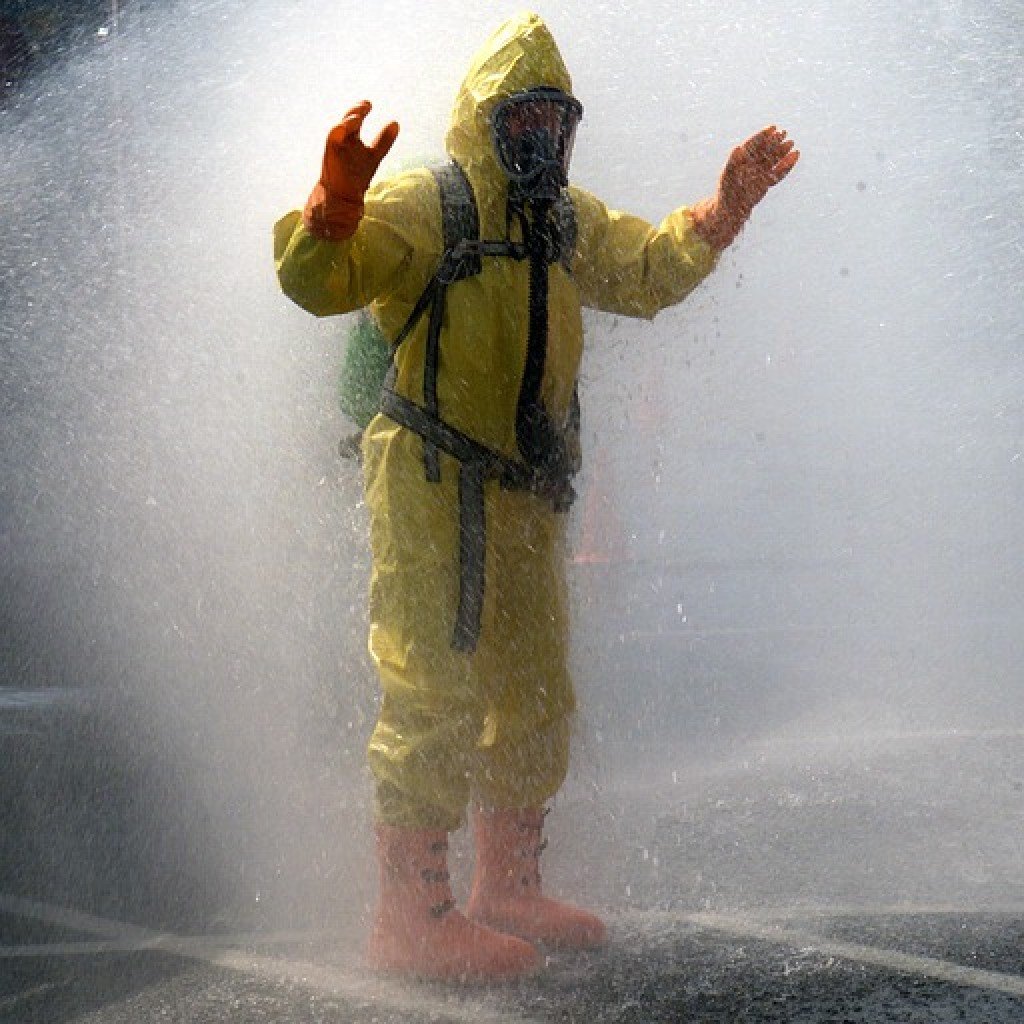airomerix
PDF THINK TANK: ANALYST

- Joined
- Dec 31, 2012
- Messages
- 1,624
- Reaction score
- 35
- Country
- Location
Ex IAF Air Marshal has written and published the following article about PAF installations and made it a part of OSINT. Lots of wrong information and assumptions are taken. And we shall not care to admit, approve, or disapprove any of it. Let them assume a water tank to be a nuclear missile storage depot. :grin:
Just enjoy the article.
Pakistan Air Force Operational Airbases – A Comprehensive Look
The Pakistan Air Force (PAF) has three geographical Commands, Northern Air Command (NAC), Peshawar, Central Air Command (CAC), Lahore, and Southern Air Command (SAC), Karachi. It has two functional Commands, the Air Force Strategic Command (AFSC), at Islamabad, and Air Defence Command (ADC), at Rawalpindi. PAF has a total of 21 air bases, comprising 13 flying bases and 8 non-flying bases. Flying bases are operational bases from which aircraft operate during peacetime and wartime; whereas non-flying bases conduct either training, administration, maintenance, or mission support. In comparison, the Indian Air Force (IAF) currently has around 66 air stations, comprising 47 Wings and 19 FBSUs.
PAF’s major operational bases are fully functional bases from which aircraft operate during peacetime. They have complete infrastructure of hardened shelters, control towers, workshops, ordnance depots etc. Forward operational bases are active during peacetime and become fully operational during wartime. These are the bases on which the planes are dispersed during war. They are capable of supporting almost all types of missions. They are generally lightly manned during peace time and are usually activated during exercises or some national crisis. Satellite bases are used for emergency landing and recovery of aircraft during both peacetime and wartime. They have a very small infrastructure and are either lightly manned or unmanned. Ground Installations are other training and radar bases that do not have a runway and other landing facilities.

PAF Bases Picture Credit: fas.org
PAF Base Masroor, Karachi
PAF Base Masroor is the largest airbase operated by the PAF. It is located in the Mauripur area of Karachi, in the Sindh province. The airbase at Mauripur was established by Britain (Royal Indian Air Force, RIAF) during World War II in 1940–1941. On establishment of the Royal Pakistan Air Force (RPAF) the base became RPAF Station Mauripur. After 1956, it became PAF Station Mauripur. PAF Base Mauripur was renamed PAF Base Masroor in honour of former Base Commander, Air Commodore Masroor Hussain, who died in June 1967 ,while piloting a Martin B-57 bomber which was struck by a vulture causing his instant incapacitation and the aircraft crashed near National Cricket Stadium. He managed to direct the burning aircraft away from a populated area before crashing. Masroor base is claimed to have the distinction of not only being the largest base, area wise, in Pakistan but also in Asia. Before Karachi airport came up, it was also used for domestic flights. It is of immense strategic importance considering it has been entrusted upon the task of defending the coastal and Southern region of Pakistan. It houses the 32 Tactical Attack (TA) Wing which comprises four separate squadrons, and comes under Southern Air Command. The airbase houses No. 2 MR, No. 4 EW, No. 7 TA, No. 8 TA, No. 84 SAR squadrons, which operate JF-17 Thunder, ZDK-03 AEW&C Karakoram Eagle, Mirage-IIEA ROSE-1, Mirage 5PA2/3, and Mirage IIIDE 5EF, and Alouette III aircraft.

Picture Credit: Karachi Transport Network
PAF Base Faisal is the other Pakistan Air Force base in Karachi. A new PAF Base Bholari near Karachi was inaugurated in January 2018. As of now only 19 Sqn is there and another Squadron from Masroor will also move there after the completion of support facilities.

Masroor Airfiled. Picture Credit: wikimapia
PAF Base Faisal
PAF Base Faisal, founded as RAF Drigh Road, in the middle of the town in Karachi. During the British Raj, it was known as RAF Drigh Road, and was the birthplace of the colonial-era Royal Indian Air Force, the PAF’s parent force. The Royal Air Force mutiny of 1946 was a mutiny on dozens of Royal Air Force stations in the Indian Subcontinent in January 1946. The mutiny began at RAF Drigh Road, and later spread toinvolve nearly 50,000 men over 60 RAF stations in British India and RAF bases as far as Singapore. In 1974, it was named after late King Faisal of Saudi Arabia. It houses the PAF’s Southern Air Command HQ and PAF Air War College. It is designated No. 40 (Air Mobility) Wing under Southern Air Command. No. 21 ATS operates the C-130 aircraft.

Air War College. Picture Credit: Wikipedia
One of the facilities at PAF Base Faisal, the 102 Air Engineering depot, is responsible for the overhaul of turbo jet engines for the PAF’s fleet of Chengdu F-7 Chinese interceptor aircraft. On 4 July 2003 a ceremony was held to celebrate the roll-out of the 10,000th turbojet engine to be overhauled at the facility. The engine overhaul workshop was also upgraded to overhaul the newer WP-13F turbojet enginesof the PAF’s latest F-7 model, the F-7PG.

Masroor Nuclear Bunkers. Picture Credit: FAS.org
PAF Base Bholari
Bholari, No. 41 (Tactical) Wing, under Southern Air Command, is an operational base in district Jamshoro between Karachi and Hyderabad in Sindh. It was inaugurated recently, and now has 19 Sqn, OCU, operating the F-16 A/B Block 15ADF aircraft.

Bholari Airbase. Picture Credit: The Print
PAF Base Shabaz, Jacobabad
PAF Base Shahbaz, No. 39 Tactical Wing, under Southern Air Command is the airbase at Jacobabad, Sindh. It is a military base operated by the PAF and also has a civilian airport. It is essentially a F-16 base and also hosts Lockheed-Martin contract personnel for the new F-16’s. Base has the No.5 Squadron (F-16 C/D Block 52+) and the N0.11 MR (multirole) F-16 A/B Squadron. It also has an SAR unit operating Leonardo AW139 helicopters.

Jacobabad. Image Source: publicintelligence.net
PAF Base Samungli, Quetta
Samungli is the PAF airbase located near Quetta in the Balochistan province. The base comes under Southern Air Command. Originally used as a forward operating location during exercises and wartime, it was converted into a main operating base during the 1970s. During British time it was known as RPAF Station Samungli. In October 1970 the Care and Maintenance (C&M) Party Samungli was redesignated as PAF Base Samungli and it was proposed that two squadrons would be based there by 1974. From 1970 to 1978 the base saw fighter squadrons from Masroor, Sargodha and Peshawar deploying during summertime for several weeks. PAF Base Samungli was converted from a satellite base to a main operating base on 31 March 1978, after which the No. 23 Squadron was permanently deployed there. Later the No. 17 Squadron was also based at Samungli and the two squadrons were assigned to the No. 31 Wingestablished in May 1983.
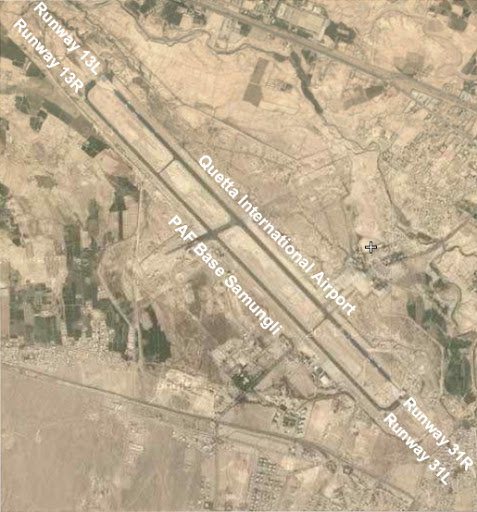
Samungli. Image Credit History of PIA
College students were invited to annual summer camps. Firepower and close air support demonstrations were held each summer for Quetta Staff College students by various PAF squadrons. The tradition continues today although mostly by the squadrons now based at Samungli.
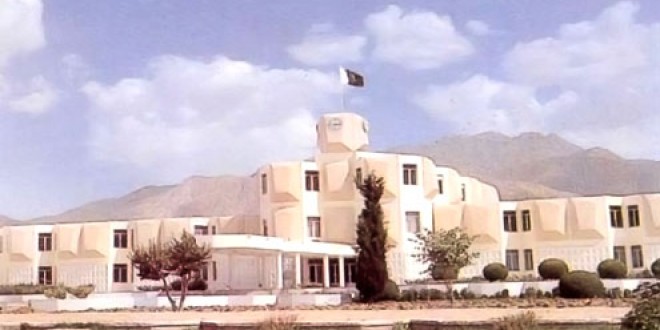
Command and Staff College, Quetta. Picture Credit: archnet.org
The setting up of air defence units began in 1981 after HQ No. 4 Sector and its component units was moved nearby due to the Soviet-Afghan war. On 26 May 1981 an Afghan Air Force Mil Mi-8 helicopter was hijacked from Qandahar and landed at Samungli. The base has been used by the United States for military logistical operations in support of the 2001 war in Afghanistan. According to an anonymous source, the Pentagon is able to make use of the base “as and when”. Samungli currently houses two PAF squadrons, No.23 AS, flying the Chengdu F-7PG, and the No. 28 MR flying the JF-17 Thunder combat aircraft.
PAF Base Mushaf, Sargodha
Mushaf airbase is at Sargodha, in the Punjab province of Pakistan. Designated No. 38 (Tactical) Wing, it is under the Central Air Command and also houses the Command headquarters. Known as PAF Base Sargodha until 2003, when it was renamed in honour of former Base Commander and Chief of the Air Staff Air Chief Marshal Mushaf Ali Mir whose aircraft crashed on a routine flight near Kohat the same year. The base houses the Combat Commanders School (CCS), which is meant for research and development in the field of tactics, weapon systems employment, and standardisation and evaluation of various units. CCS has three squadrons under its command, the “Skybolts” currently flying the Dassault Mirage III/5 ,the “Dashings” currently flying the Chengdu F-7P and the “ Dragons” currently flying JF-17. CCS staff pay annual visits to all PAF fighter squadrons to evaluate and enhance combat capabilities.

Mushaf Airbase. Picture Credit: Wikimapia
In June 1990 the Squadron Combat Upgradation Programme (SCUP) was initiated and four-month-long cycles were conducted by October 1990, each involving two fighter squadrons, F-16 pilots and ground controllers. SCUP was replaced by the regular Exercise Saffron Bandit in 1992, which is a more demanding and complicated near-realistic environment for participating pilots. Exercise Saffron Bandit is still supervised and its syllabus constantly improved by the CCS. The airbase has the N0. 9 MR (F-16 A/B), No. 24 EW (Falcon 20 F/G), CCS F-16 A/B, CCS F-7P, CCS Mirage 5PA, CCS JF-17, No. 29 MR F-16 A/B, No. 82 SAR units with Alouettes.

Sargodha nuclear facility. Image Credit; Through strategicstudyindia.blogspot.com
PAF Base Rafiqui
Formerly known as PAF Base Shorkot, the airbase is located near Shorkot in Jhang District of Punjab. It is around 337 km south of Islamabad. The base is served by a single 10,000-foot runway and a parallel taxiway that could be used for emergency landing and recovery of aircraft. The base was renamed in honour of Squadron Leader Sarfaraz Ahmed Rafiqui, a highly decorated fighter pilot who led raids into enemy territory during the Indo-Pakistan war of 1965. In 1965 war IAF hit this, Pakistan’s most protected base & destroyed 10 aircraft. It is designated the No. 34 (Tactical Attack) Wing under Central Air Command. The base operates No. 15 TA, No. 22 OCU, No. 25 TA, No.27 TA and No. 83 SAR (Alouette III) units. Essentially it is Mirage III airbase.
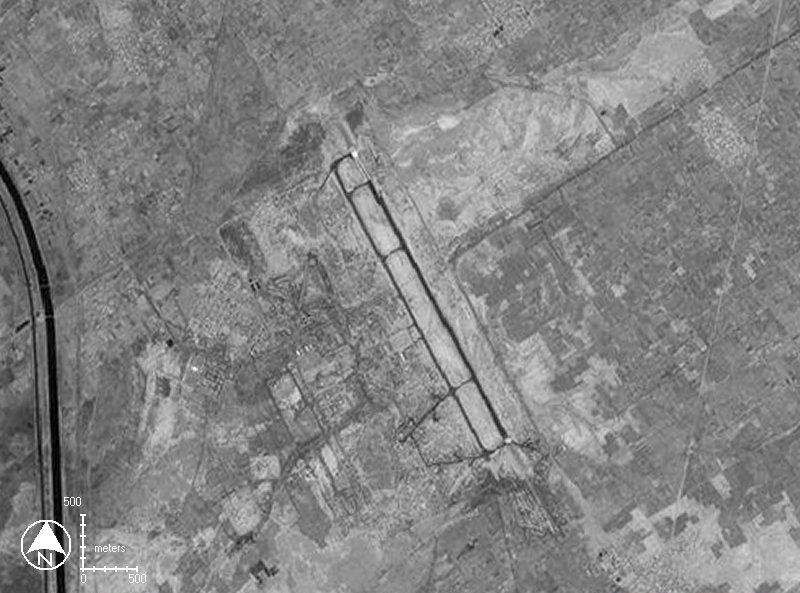
Rafiqui. Image Credit: globalsecurity.org
PAF Base Peshawar
It is an airbase of the PAF located in Peshawar, Kyber-Pakhtunkhwa. Designated No. 36 (Tactical Attack) Wing, it comes under Northern Air Command. It also houses the PAF’s Northern Air Command, located immediately to the east of Peshawar International Airport which is shared by civil aviation flights and military flights. It has No. 26 MR (JF-17), No. 17 AS (F-7PG), and No. 81 SAR (Alouette III) units. At Least five civilians were killed and 40 others wounded when Tehrik-e-Taliban militants attacked PAF Base Peshawar on 15 December 2012. Five TTP fighters were also killed in the attack.

Peshawar. Image Credit: publicintelligence.net
PAF Base M.M. Alam
PAF MM Alam airbase is at Mianwali in the Punjab province. It is under Northern Air Command and designated No. 37 (Combat Training) Wing. Originally it was a WW II airstrip, which was upgraded into a satellite airbase for the then PAF Base Sargodha during the 1965 Indo-Pak War to act as an alternate recovery airfield. The airbase became operational in October 1971. Aircraft of different types, including the Shenyang F-6, were operated from the base during the 1971 Indo-Pak War. Pilots and anti-aircraft gunners of Mianwali airbase reportedly shot down 5 enemy aircraft during that conflict,the first three days of which the base came under regular attacks. The airbase was again upgraded to a permanent operational airbase in August 1974. During November 1975, the No.1 Fighter Conversion Unit (FCU) was transferred to Mianwali airbase from Masroor where it began fighter conversion training using the Ft-5 dual-seat training aircraft. Over 500 fighter pilots have graduated since. In November 1976, No.14 Squadron was transferred to Mianwali airbase for operational conversion of graduates of the No.1 Fighter Conversion Unit from dual-seat to the Shenyang F-6 single-seat fighter aircraft. When No.14 Squadron was selected to operate the F-16s in August 1986, it was transferred away from Mianwali airbase and replaced by No.25 Squadron. Further construction of facilities and transfer of units to the base took place during the 1980s. On January 5, 2012, No 1 Fighter Conversion Unit re-equipped, and is now using the Chinese K-8P fighter trainer aircraft. The base has No. 1 FCU (K-8P), No. 18 OCU (F-7P, FT-7P), No. 20 OCU (F-7PG, FT-7P), and the No. 86 SAR (Alouette III) units.
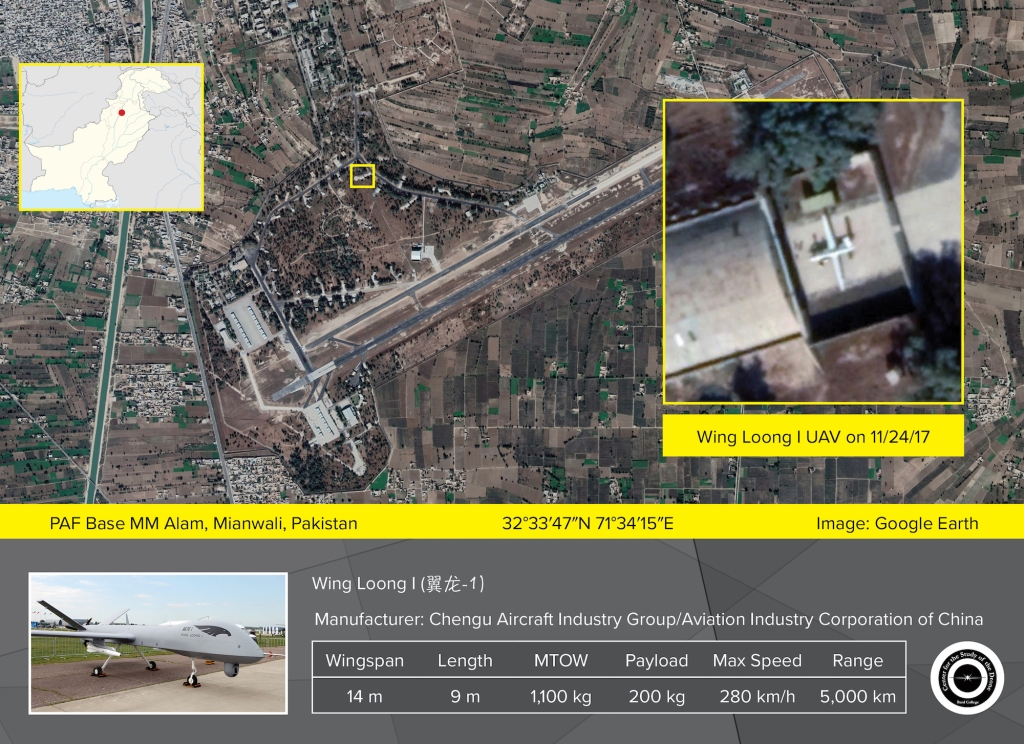
Mianwali. Image Credit: dronecenter.bard.edu
Minhas Airbase
The airbase is located at Kamra, Attock District of Punjab. It was named in the honour of Pilot Officer Rashid Minhas who was awarded the Nishan-e-Haider for valour in the 1971 Indo-Pakistan War. Designated No. 33 (Tactical) Wing, it comes under Northern Air Command. The airbase has No. 14 AS (JF-17), No. 16 OCU (JF-17), No. 3 EW (Saab 2000 Erieye AEW&C) and No. 87 SAR (Alouette III, Mi-171Sh) units.

Minhas Airbase. Image Credit: dawn.com
The Pakistan Aeronautical Complex is located in Minhas Airbase. Manufactured here are the JF-17 Thunder, MFI-17 Mushshak, and Hongdu JL-8. It also rebuilds aircraft like the Dassault Mirage and Chengdu F-7. On 16 August 2012, nine Tehrik-e-Taliban militants assaulted PAF Base Minhas at about 2 am. After a pitched battle all nine attackers were killed while two Pakistani security officials also died. The base commander, Air Commodore Muhammad Azam, was reported wounded in the attack as well. The militants also destroyed one Saab 2000 Erieye plane. and damaged two others.

PAC Kamra. Picture Credit: The Express Tribune
Murid Airbase
It is a PAF Base located at Murid, Chakwal, in Punjab. It comes under Northern Air Command. It has a 9,000 ft asphalt runway. There is no permanent unit at this base.
PAF Base Nur Khan, Chaklala
The airbase was founded as RAF Station Chaklala, it is located located at Chaklala, Rawalpindi, Punjab. The former Benazir Bhutto International Airport (now defunct) forms part of this airbase. During WW II, parachute training operations were conducted there. It later became PAF’s transport hub, with fleet of various transport aircraft operating from it. During the Pakistan Earthquake of 2005, 300 troops of the United States as well as U.S. aircraft were deployed to Chaklala to aid in relief efforts. The U.S. reportedly has a permanent military presence at Chaklala since late 2001 for handling logistics efforts and other movements in relation to the war in Afghanistan. In 2009 the PAF’s first of four Il-78 aerial refueling tanker aircraft were delivered to PAF Base Chaklala and the No. 10 MRTT (Multi Role Tanker Transport) squadron was established there. The name of the base was changed in 2012 from PAF Base Chaklala to PAF Base Nur Khan in remembrance of its first Base Commander, Air Marshal Nur Khan. Nur Khan was also the second Pakistani chief of the PAF, and a veteran of several conflicts fought by Pakistan.
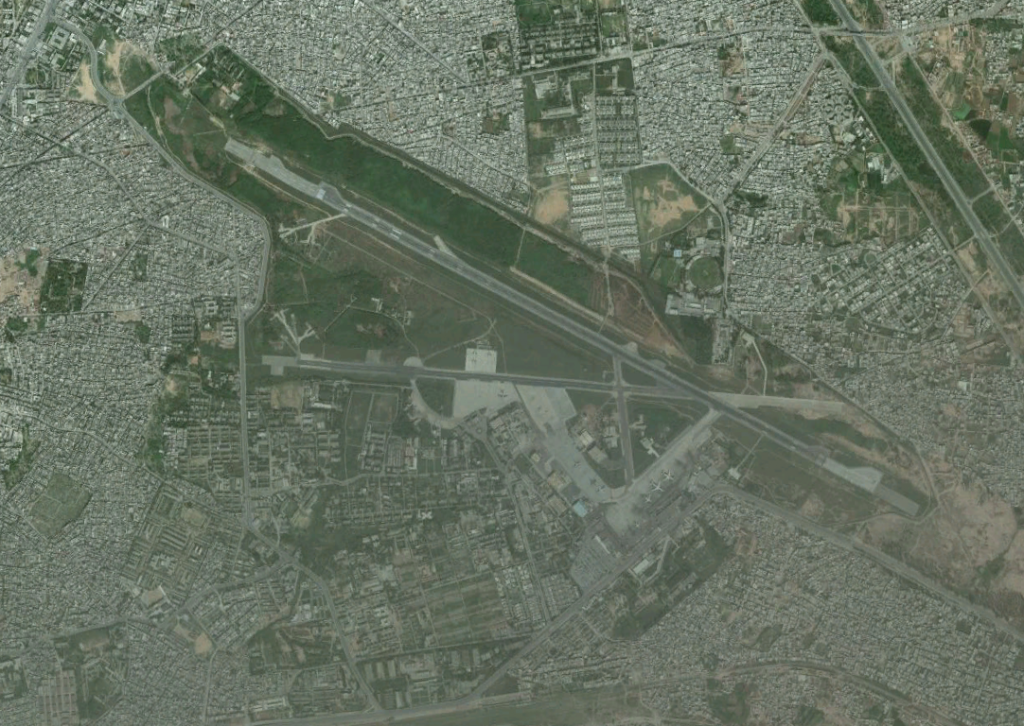
Chaklala. Image Credit: publicintelligence.net
The airbase has the No.6 Squadron (Antelopes). The squadron was initially equiped with Douglas DC-3 Dakota aircraft in October 1947. Later they were eqquipped with C-130B. In the 1965 Indo-Pakistani War the Antelopes dropped parachute commandos into Indian territory in a night-time mission using three C-130B transports. Just before the 1965 war started, modified the Hercules to carry bombs. It was converted to carry 10,000 kg of bombs, which were rolled out on pallets from the rear ramp, and over 21 night-time bombing raids were flown against Indian forces. Two of the unit’s C-130 transports were deployed to Dhaka from March 71 until the 1971 Indo-Pakistani War began on 3 December 1971. They were used to evacuate soldiers and civilians from hostile areas of East Pakistan. No. 6 Squadron flew bombing missions from West Pakistan in the same manner as those flown during the 1965 war, and no transport aircraft were lost during these sorties. No. 12 Squadron (Globe Trotters) is a Composite Squadron with Phenom 100 and Gulf Stream IV. No. 10 MRTT Squadron (Bulls) is the with Il-78 since December 2009. No. 41 Squadron operatesCessna, Beech, Y-12 amongst other planes. The Centre for Aerospace and Security Studies, a research think tank founded by the Pakistan Air Force, is located next to Nur Khan Base.

C 130. Picture Credit: You Tube
Pakistan Air Force Academy, Asghar Khan , Risalpur
The academy was created in 1910 and was a former airfield of the Royal Flying Corps, and later Royal Air Force. Located in a basin 1050 feet above sea level, it is bounded on the south and west by the Kabul and Kalpani rivers, respectively. Risalpur is in Nowshera District of the Khyber Pakhtunkhwa province. The famous Khyber Pass is 90 kilometers to the north. It became the airfield of the PAF on 15 August 1947. On 21 January 1967, it was upgraded to the status of an academy. It has five components. Initially, it was equipped with Harvard, Tiger Moth, Auster, Fury and Tempest aircraft. In 1955 it introduced the Lockheed T-33 jet trainer. The T-6G (Harvard), was later replaced by the Mushshak (Saab Trainer). Currently, the trainer aircraft at the PAF Academy are T-37, Mushshak MFI-17, and the K-8 joined in 1995. The academy has two aviation wings and a squadron. The Primary Flying Training (PFT) Wing consists of MFI-17 while Basic Flying Training (BFT) Wing consists of T-37 aircraft. An Advance Flying Training squadron is composed of K-8 aircraft.
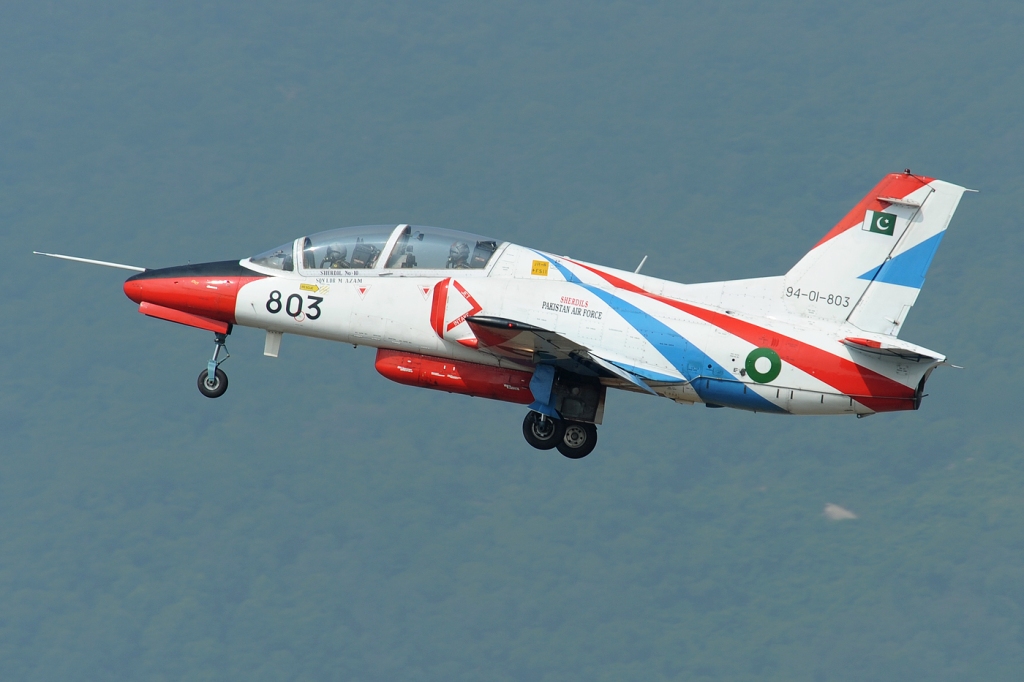
K-8 Trainer. Picture Credit: Wikipedia
The main components of the academy are a College of Flying Training (CFT), which imparts four-year undergraduate programs in science along with equipping cadets of the Flying branch, with flying skills. CFT is affiliated with air University. The college consists of Flying Training Wing, Directorate of Studies (DOS), Engineering Wing and Flying Instructors School. College of Aeronautical Engineering (CAE) is a constituent institute of the academy, which imparts engineering education to the cadets inducted in the engineering branch of PAF. The Flying Instructors School (FIS) trains instructors, not only for the PAF but also for the Pakistan Army and Navy. It trains instructors from countries in the Middle East, Southeast Asia, and Africa. The Para Training School was established at the PAF Academy Risalpur in 2003. It is the second parachute school in Pakistan after the Pakistan Army Para School located at Peshawar.
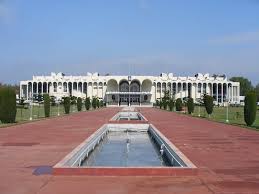
PAF Academy Risalpur. Picture Credit Pakistan Today
Link
Just enjoy the article.
Pakistan Air Force Operational Airbases – A Comprehensive Look
The Pakistan Air Force (PAF) has three geographical Commands, Northern Air Command (NAC), Peshawar, Central Air Command (CAC), Lahore, and Southern Air Command (SAC), Karachi. It has two functional Commands, the Air Force Strategic Command (AFSC), at Islamabad, and Air Defence Command (ADC), at Rawalpindi. PAF has a total of 21 air bases, comprising 13 flying bases and 8 non-flying bases. Flying bases are operational bases from which aircraft operate during peacetime and wartime; whereas non-flying bases conduct either training, administration, maintenance, or mission support. In comparison, the Indian Air Force (IAF) currently has around 66 air stations, comprising 47 Wings and 19 FBSUs.
PAF’s major operational bases are fully functional bases from which aircraft operate during peacetime. They have complete infrastructure of hardened shelters, control towers, workshops, ordnance depots etc. Forward operational bases are active during peacetime and become fully operational during wartime. These are the bases on which the planes are dispersed during war. They are capable of supporting almost all types of missions. They are generally lightly manned during peace time and are usually activated during exercises or some national crisis. Satellite bases are used for emergency landing and recovery of aircraft during both peacetime and wartime. They have a very small infrastructure and are either lightly manned or unmanned. Ground Installations are other training and radar bases that do not have a runway and other landing facilities.

PAF Bases Picture Credit: fas.org
PAF Base Masroor, Karachi
PAF Base Masroor is the largest airbase operated by the PAF. It is located in the Mauripur area of Karachi, in the Sindh province. The airbase at Mauripur was established by Britain (Royal Indian Air Force, RIAF) during World War II in 1940–1941. On establishment of the Royal Pakistan Air Force (RPAF) the base became RPAF Station Mauripur. After 1956, it became PAF Station Mauripur. PAF Base Mauripur was renamed PAF Base Masroor in honour of former Base Commander, Air Commodore Masroor Hussain, who died in June 1967 ,while piloting a Martin B-57 bomber which was struck by a vulture causing his instant incapacitation and the aircraft crashed near National Cricket Stadium. He managed to direct the burning aircraft away from a populated area before crashing. Masroor base is claimed to have the distinction of not only being the largest base, area wise, in Pakistan but also in Asia. Before Karachi airport came up, it was also used for domestic flights. It is of immense strategic importance considering it has been entrusted upon the task of defending the coastal and Southern region of Pakistan. It houses the 32 Tactical Attack (TA) Wing which comprises four separate squadrons, and comes under Southern Air Command. The airbase houses No. 2 MR, No. 4 EW, No. 7 TA, No. 8 TA, No. 84 SAR squadrons, which operate JF-17 Thunder, ZDK-03 AEW&C Karakoram Eagle, Mirage-IIEA ROSE-1, Mirage 5PA2/3, and Mirage IIIDE 5EF, and Alouette III aircraft.

Picture Credit: Karachi Transport Network
PAF Base Faisal is the other Pakistan Air Force base in Karachi. A new PAF Base Bholari near Karachi was inaugurated in January 2018. As of now only 19 Sqn is there and another Squadron from Masroor will also move there after the completion of support facilities.

Masroor Airfiled. Picture Credit: wikimapia
PAF Base Faisal
PAF Base Faisal, founded as RAF Drigh Road, in the middle of the town in Karachi. During the British Raj, it was known as RAF Drigh Road, and was the birthplace of the colonial-era Royal Indian Air Force, the PAF’s parent force. The Royal Air Force mutiny of 1946 was a mutiny on dozens of Royal Air Force stations in the Indian Subcontinent in January 1946. The mutiny began at RAF Drigh Road, and later spread toinvolve nearly 50,000 men over 60 RAF stations in British India and RAF bases as far as Singapore. In 1974, it was named after late King Faisal of Saudi Arabia. It houses the PAF’s Southern Air Command HQ and PAF Air War College. It is designated No. 40 (Air Mobility) Wing under Southern Air Command. No. 21 ATS operates the C-130 aircraft.

Air War College. Picture Credit: Wikipedia
One of the facilities at PAF Base Faisal, the 102 Air Engineering depot, is responsible for the overhaul of turbo jet engines for the PAF’s fleet of Chengdu F-7 Chinese interceptor aircraft. On 4 July 2003 a ceremony was held to celebrate the roll-out of the 10,000th turbojet engine to be overhauled at the facility. The engine overhaul workshop was also upgraded to overhaul the newer WP-13F turbojet enginesof the PAF’s latest F-7 model, the F-7PG.

Masroor Nuclear Bunkers. Picture Credit: FAS.org
PAF Base Bholari
Bholari, No. 41 (Tactical) Wing, under Southern Air Command, is an operational base in district Jamshoro between Karachi and Hyderabad in Sindh. It was inaugurated recently, and now has 19 Sqn, OCU, operating the F-16 A/B Block 15ADF aircraft.

Bholari Airbase. Picture Credit: The Print
PAF Base Shabaz, Jacobabad
PAF Base Shahbaz, No. 39 Tactical Wing, under Southern Air Command is the airbase at Jacobabad, Sindh. It is a military base operated by the PAF and also has a civilian airport. It is essentially a F-16 base and also hosts Lockheed-Martin contract personnel for the new F-16’s. Base has the No.5 Squadron (F-16 C/D Block 52+) and the N0.11 MR (multirole) F-16 A/B Squadron. It also has an SAR unit operating Leonardo AW139 helicopters.

Jacobabad. Image Source: publicintelligence.net
PAF Base Samungli, Quetta
Samungli is the PAF airbase located near Quetta in the Balochistan province. The base comes under Southern Air Command. Originally used as a forward operating location during exercises and wartime, it was converted into a main operating base during the 1970s. During British time it was known as RPAF Station Samungli. In October 1970 the Care and Maintenance (C&M) Party Samungli was redesignated as PAF Base Samungli and it was proposed that two squadrons would be based there by 1974. From 1970 to 1978 the base saw fighter squadrons from Masroor, Sargodha and Peshawar deploying during summertime for several weeks. PAF Base Samungli was converted from a satellite base to a main operating base on 31 March 1978, after which the No. 23 Squadron was permanently deployed there. Later the No. 17 Squadron was also based at Samungli and the two squadrons were assigned to the No. 31 Wingestablished in May 1983.

Samungli. Image Credit History of PIA
College students were invited to annual summer camps. Firepower and close air support demonstrations were held each summer for Quetta Staff College students by various PAF squadrons. The tradition continues today although mostly by the squadrons now based at Samungli.

Command and Staff College, Quetta. Picture Credit: archnet.org
The setting up of air defence units began in 1981 after HQ No. 4 Sector and its component units was moved nearby due to the Soviet-Afghan war. On 26 May 1981 an Afghan Air Force Mil Mi-8 helicopter was hijacked from Qandahar and landed at Samungli. The base has been used by the United States for military logistical operations in support of the 2001 war in Afghanistan. According to an anonymous source, the Pentagon is able to make use of the base “as and when”. Samungli currently houses two PAF squadrons, No.23 AS, flying the Chengdu F-7PG, and the No. 28 MR flying the JF-17 Thunder combat aircraft.
PAF Base Mushaf, Sargodha
Mushaf airbase is at Sargodha, in the Punjab province of Pakistan. Designated No. 38 (Tactical) Wing, it is under the Central Air Command and also houses the Command headquarters. Known as PAF Base Sargodha until 2003, when it was renamed in honour of former Base Commander and Chief of the Air Staff Air Chief Marshal Mushaf Ali Mir whose aircraft crashed on a routine flight near Kohat the same year. The base houses the Combat Commanders School (CCS), which is meant for research and development in the field of tactics, weapon systems employment, and standardisation and evaluation of various units. CCS has three squadrons under its command, the “Skybolts” currently flying the Dassault Mirage III/5 ,the “Dashings” currently flying the Chengdu F-7P and the “ Dragons” currently flying JF-17. CCS staff pay annual visits to all PAF fighter squadrons to evaluate and enhance combat capabilities.

Mushaf Airbase. Picture Credit: Wikimapia
In June 1990 the Squadron Combat Upgradation Programme (SCUP) was initiated and four-month-long cycles were conducted by October 1990, each involving two fighter squadrons, F-16 pilots and ground controllers. SCUP was replaced by the regular Exercise Saffron Bandit in 1992, which is a more demanding and complicated near-realistic environment for participating pilots. Exercise Saffron Bandit is still supervised and its syllabus constantly improved by the CCS. The airbase has the N0. 9 MR (F-16 A/B), No. 24 EW (Falcon 20 F/G), CCS F-16 A/B, CCS F-7P, CCS Mirage 5PA, CCS JF-17, No. 29 MR F-16 A/B, No. 82 SAR units with Alouettes.

Sargodha nuclear facility. Image Credit; Through strategicstudyindia.blogspot.com
PAF Base Rafiqui
Formerly known as PAF Base Shorkot, the airbase is located near Shorkot in Jhang District of Punjab. It is around 337 km south of Islamabad. The base is served by a single 10,000-foot runway and a parallel taxiway that could be used for emergency landing and recovery of aircraft. The base was renamed in honour of Squadron Leader Sarfaraz Ahmed Rafiqui, a highly decorated fighter pilot who led raids into enemy territory during the Indo-Pakistan war of 1965. In 1965 war IAF hit this, Pakistan’s most protected base & destroyed 10 aircraft. It is designated the No. 34 (Tactical Attack) Wing under Central Air Command. The base operates No. 15 TA, No. 22 OCU, No. 25 TA, No.27 TA and No. 83 SAR (Alouette III) units. Essentially it is Mirage III airbase.

Rafiqui. Image Credit: globalsecurity.org
PAF Base Peshawar
It is an airbase of the PAF located in Peshawar, Kyber-Pakhtunkhwa. Designated No. 36 (Tactical Attack) Wing, it comes under Northern Air Command. It also houses the PAF’s Northern Air Command, located immediately to the east of Peshawar International Airport which is shared by civil aviation flights and military flights. It has No. 26 MR (JF-17), No. 17 AS (F-7PG), and No. 81 SAR (Alouette III) units. At Least five civilians were killed and 40 others wounded when Tehrik-e-Taliban militants attacked PAF Base Peshawar on 15 December 2012. Five TTP fighters were also killed in the attack.

Peshawar. Image Credit: publicintelligence.net
PAF Base M.M. Alam
PAF MM Alam airbase is at Mianwali in the Punjab province. It is under Northern Air Command and designated No. 37 (Combat Training) Wing. Originally it was a WW II airstrip, which was upgraded into a satellite airbase for the then PAF Base Sargodha during the 1965 Indo-Pak War to act as an alternate recovery airfield. The airbase became operational in October 1971. Aircraft of different types, including the Shenyang F-6, were operated from the base during the 1971 Indo-Pak War. Pilots and anti-aircraft gunners of Mianwali airbase reportedly shot down 5 enemy aircraft during that conflict,the first three days of which the base came under regular attacks. The airbase was again upgraded to a permanent operational airbase in August 1974. During November 1975, the No.1 Fighter Conversion Unit (FCU) was transferred to Mianwali airbase from Masroor where it began fighter conversion training using the Ft-5 dual-seat training aircraft. Over 500 fighter pilots have graduated since. In November 1976, No.14 Squadron was transferred to Mianwali airbase for operational conversion of graduates of the No.1 Fighter Conversion Unit from dual-seat to the Shenyang F-6 single-seat fighter aircraft. When No.14 Squadron was selected to operate the F-16s in August 1986, it was transferred away from Mianwali airbase and replaced by No.25 Squadron. Further construction of facilities and transfer of units to the base took place during the 1980s. On January 5, 2012, No 1 Fighter Conversion Unit re-equipped, and is now using the Chinese K-8P fighter trainer aircraft. The base has No. 1 FCU (K-8P), No. 18 OCU (F-7P, FT-7P), No. 20 OCU (F-7PG, FT-7P), and the No. 86 SAR (Alouette III) units.

Mianwali. Image Credit: dronecenter.bard.edu
Minhas Airbase
The airbase is located at Kamra, Attock District of Punjab. It was named in the honour of Pilot Officer Rashid Minhas who was awarded the Nishan-e-Haider for valour in the 1971 Indo-Pakistan War. Designated No. 33 (Tactical) Wing, it comes under Northern Air Command. The airbase has No. 14 AS (JF-17), No. 16 OCU (JF-17), No. 3 EW (Saab 2000 Erieye AEW&C) and No. 87 SAR (Alouette III, Mi-171Sh) units.

Minhas Airbase. Image Credit: dawn.com
The Pakistan Aeronautical Complex is located in Minhas Airbase. Manufactured here are the JF-17 Thunder, MFI-17 Mushshak, and Hongdu JL-8. It also rebuilds aircraft like the Dassault Mirage and Chengdu F-7. On 16 August 2012, nine Tehrik-e-Taliban militants assaulted PAF Base Minhas at about 2 am. After a pitched battle all nine attackers were killed while two Pakistani security officials also died. The base commander, Air Commodore Muhammad Azam, was reported wounded in the attack as well. The militants also destroyed one Saab 2000 Erieye plane. and damaged two others.

PAC Kamra. Picture Credit: The Express Tribune
Murid Airbase
It is a PAF Base located at Murid, Chakwal, in Punjab. It comes under Northern Air Command. It has a 9,000 ft asphalt runway. There is no permanent unit at this base.
PAF Base Nur Khan, Chaklala
The airbase was founded as RAF Station Chaklala, it is located located at Chaklala, Rawalpindi, Punjab. The former Benazir Bhutto International Airport (now defunct) forms part of this airbase. During WW II, parachute training operations were conducted there. It later became PAF’s transport hub, with fleet of various transport aircraft operating from it. During the Pakistan Earthquake of 2005, 300 troops of the United States as well as U.S. aircraft were deployed to Chaklala to aid in relief efforts. The U.S. reportedly has a permanent military presence at Chaklala since late 2001 for handling logistics efforts and other movements in relation to the war in Afghanistan. In 2009 the PAF’s first of four Il-78 aerial refueling tanker aircraft were delivered to PAF Base Chaklala and the No. 10 MRTT (Multi Role Tanker Transport) squadron was established there. The name of the base was changed in 2012 from PAF Base Chaklala to PAF Base Nur Khan in remembrance of its first Base Commander, Air Marshal Nur Khan. Nur Khan was also the second Pakistani chief of the PAF, and a veteran of several conflicts fought by Pakistan.

Chaklala. Image Credit: publicintelligence.net
The airbase has the No.6 Squadron (Antelopes). The squadron was initially equiped with Douglas DC-3 Dakota aircraft in October 1947. Later they were eqquipped with C-130B. In the 1965 Indo-Pakistani War the Antelopes dropped parachute commandos into Indian territory in a night-time mission using three C-130B transports. Just before the 1965 war started, modified the Hercules to carry bombs. It was converted to carry 10,000 kg of bombs, which were rolled out on pallets from the rear ramp, and over 21 night-time bombing raids were flown against Indian forces. Two of the unit’s C-130 transports were deployed to Dhaka from March 71 until the 1971 Indo-Pakistani War began on 3 December 1971. They were used to evacuate soldiers and civilians from hostile areas of East Pakistan. No. 6 Squadron flew bombing missions from West Pakistan in the same manner as those flown during the 1965 war, and no transport aircraft were lost during these sorties. No. 12 Squadron (Globe Trotters) is a Composite Squadron with Phenom 100 and Gulf Stream IV. No. 10 MRTT Squadron (Bulls) is the with Il-78 since December 2009. No. 41 Squadron operatesCessna, Beech, Y-12 amongst other planes. The Centre for Aerospace and Security Studies, a research think tank founded by the Pakistan Air Force, is located next to Nur Khan Base.

C 130. Picture Credit: You Tube
Pakistan Air Force Academy, Asghar Khan , Risalpur
The academy was created in 1910 and was a former airfield of the Royal Flying Corps, and later Royal Air Force. Located in a basin 1050 feet above sea level, it is bounded on the south and west by the Kabul and Kalpani rivers, respectively. Risalpur is in Nowshera District of the Khyber Pakhtunkhwa province. The famous Khyber Pass is 90 kilometers to the north. It became the airfield of the PAF on 15 August 1947. On 21 January 1967, it was upgraded to the status of an academy. It has five components. Initially, it was equipped with Harvard, Tiger Moth, Auster, Fury and Tempest aircraft. In 1955 it introduced the Lockheed T-33 jet trainer. The T-6G (Harvard), was later replaced by the Mushshak (Saab Trainer). Currently, the trainer aircraft at the PAF Academy are T-37, Mushshak MFI-17, and the K-8 joined in 1995. The academy has two aviation wings and a squadron. The Primary Flying Training (PFT) Wing consists of MFI-17 while Basic Flying Training (BFT) Wing consists of T-37 aircraft. An Advance Flying Training squadron is composed of K-8 aircraft.

K-8 Trainer. Picture Credit: Wikipedia
The main components of the academy are a College of Flying Training (CFT), which imparts four-year undergraduate programs in science along with equipping cadets of the Flying branch, with flying skills. CFT is affiliated with air University. The college consists of Flying Training Wing, Directorate of Studies (DOS), Engineering Wing and Flying Instructors School. College of Aeronautical Engineering (CAE) is a constituent institute of the academy, which imparts engineering education to the cadets inducted in the engineering branch of PAF. The Flying Instructors School (FIS) trains instructors, not only for the PAF but also for the Pakistan Army and Navy. It trains instructors from countries in the Middle East, Southeast Asia, and Africa. The Para Training School was established at the PAF Academy Risalpur in 2003. It is the second parachute school in Pakistan after the Pakistan Army Para School located at Peshawar.

PAF Academy Risalpur. Picture Credit Pakistan Today
Link


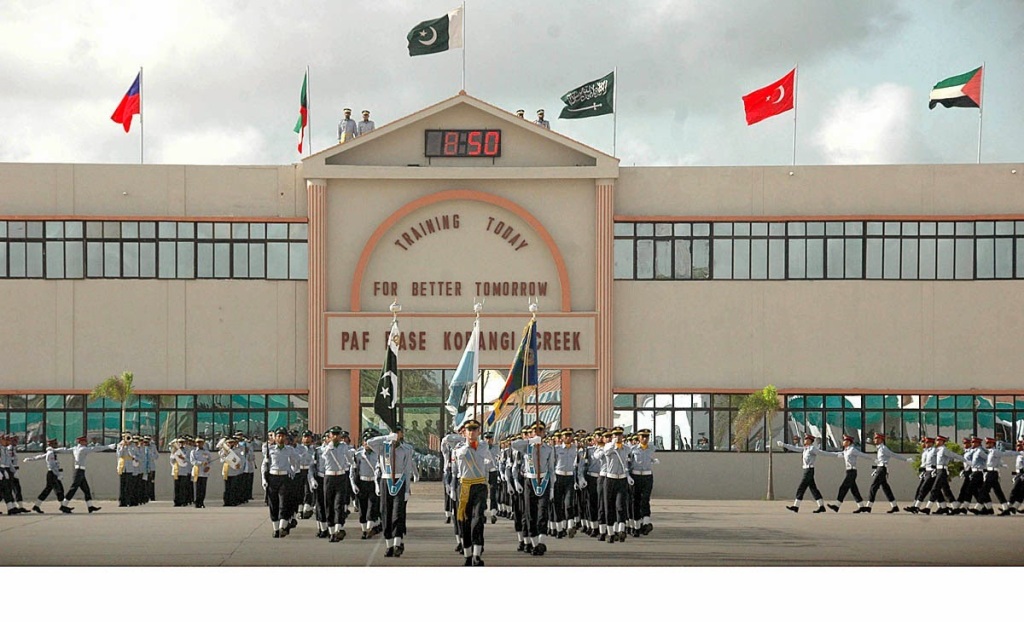



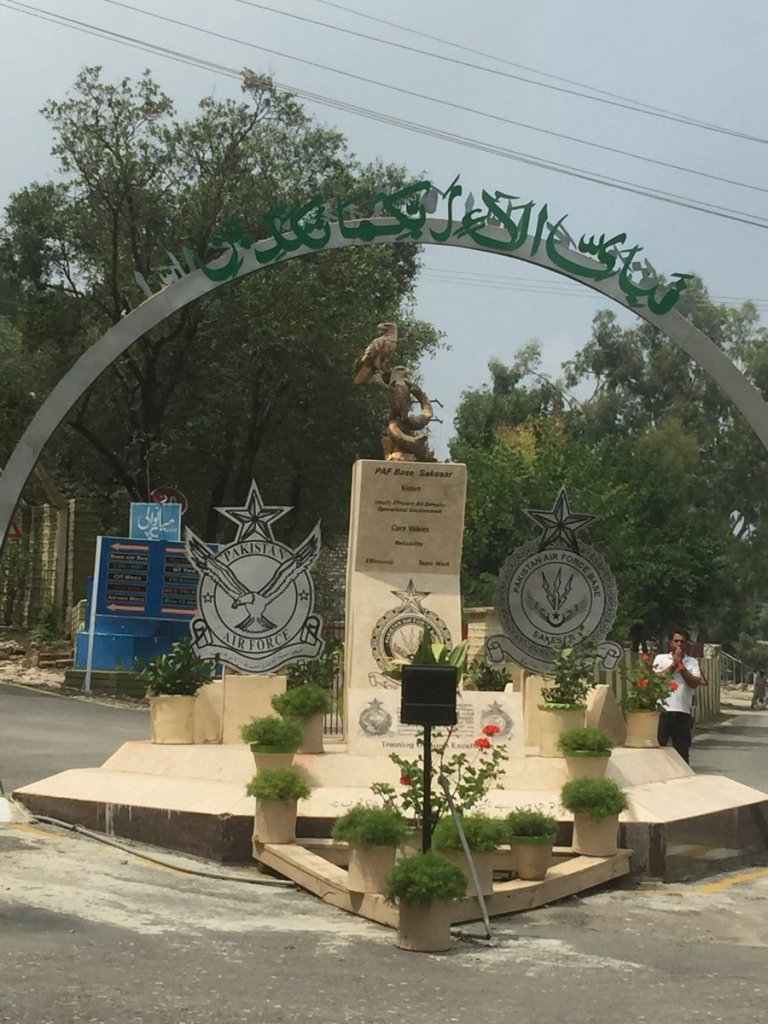
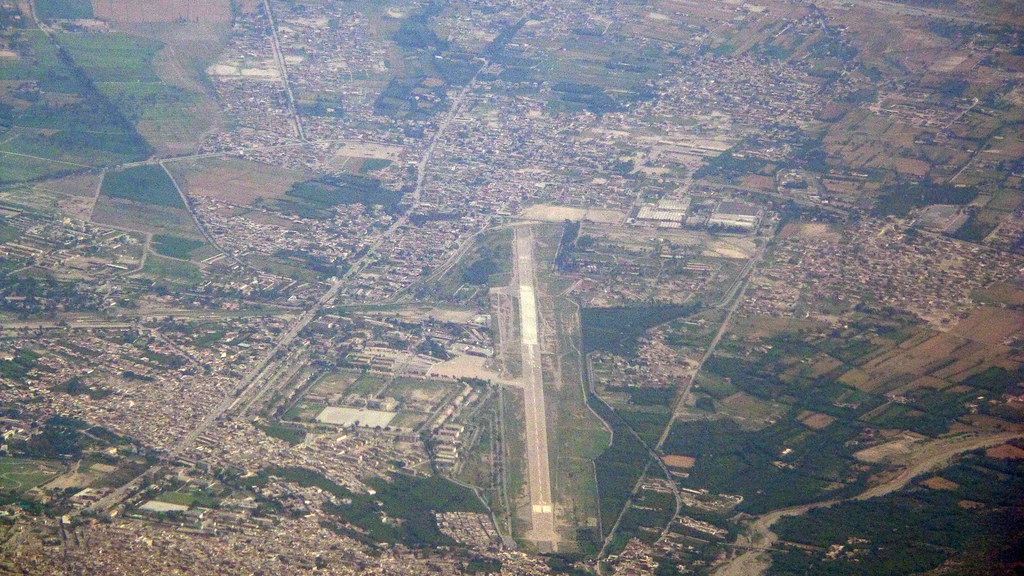



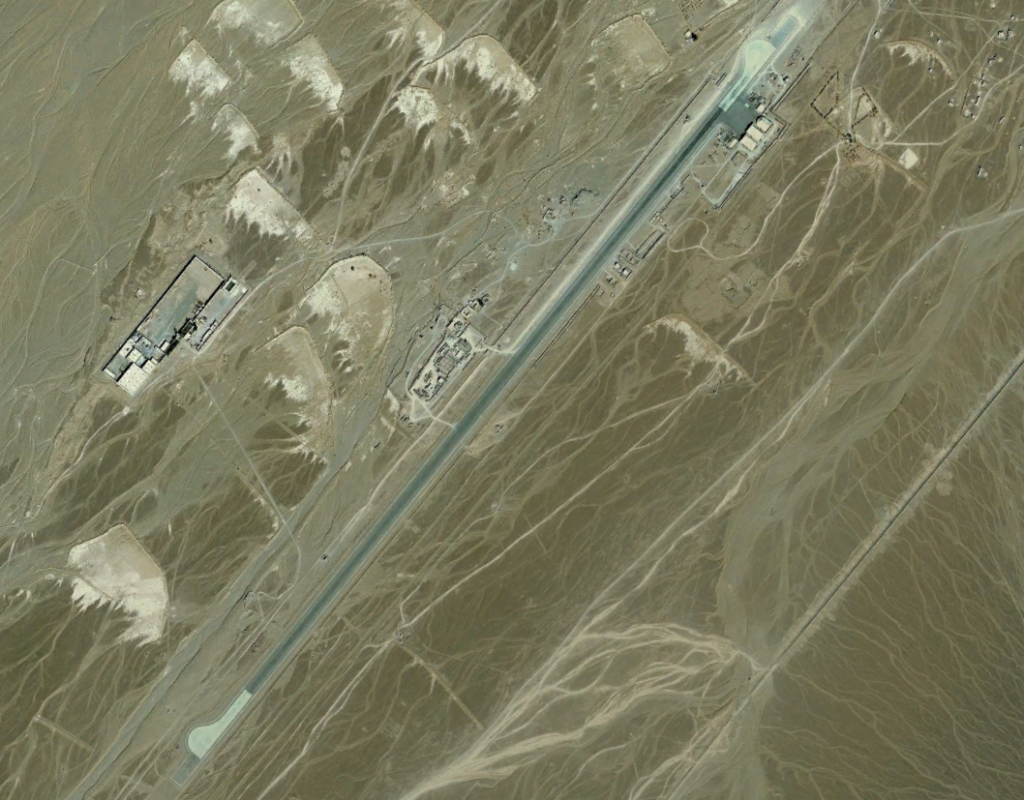
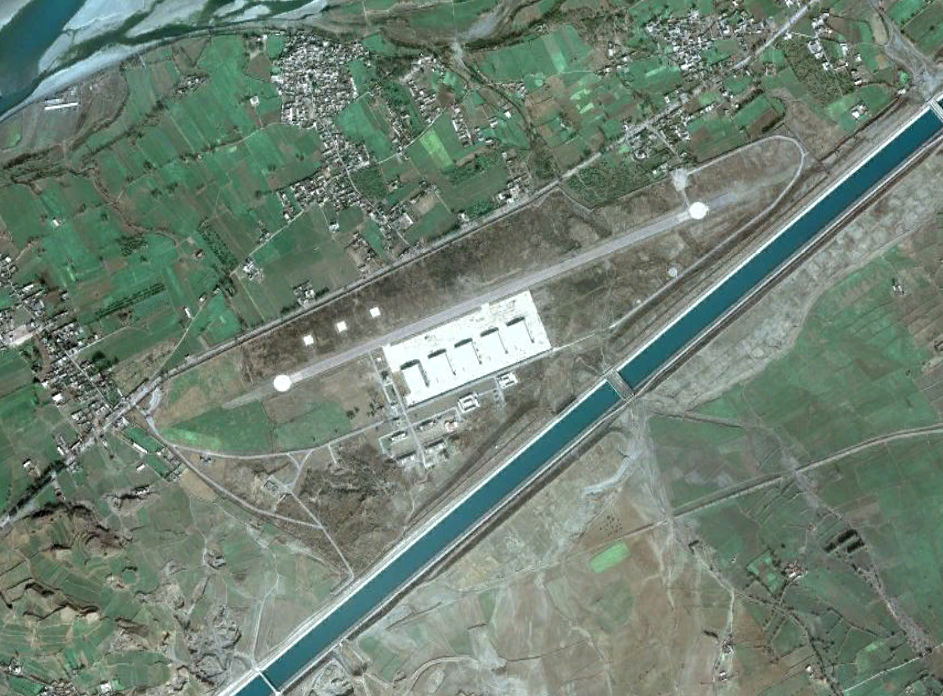

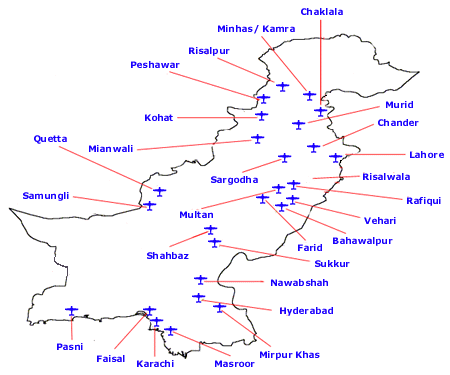

 block 3 ki pic ya vid kab aaegi bhai ?
block 3 ki pic ya vid kab aaegi bhai ?

